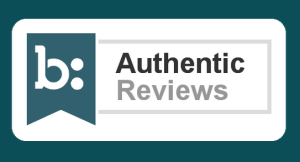User-generated content is extremely important in the decision process of consumer purchases. Ratings and reviews are found on almost any website with a product. Because of the influence this content has, it’s critical that it be authentic.
Enter Gene Austin. He is the chief executive officer of Bazaarvoice, a technology company that provides its clients with ratings and reviews software to ensure user-generated content is trustworthy. The clients then place this content on their websites in order to help inform consumer purchase decisions, as well as their own business decisions.

Although most people think Bazaarvoice is only ratings and reviews, they also collect Q&As, stories from their customers and social content from other networks – like Facebook, Twitter, Pinterest and Instagram. They use this consumer-generated content to better connect a product or brand to potential customers.
“Reviews tend to be something that consumers find incredibly important and influential in their purchase decisions because they provide a very detailed look at what this product does,” said Matt Krebsbach, director of global public and analyst relations for Bazaarvoice. “What should I expect from it? How well received has it been from other consumers that are like me? Do I feel as though it is going to fit my needs?”
Ratings and reviews have become the proxy for personal experience, with many people relying on them for validation of their purchase decisions.
“Word of mouth is consistently rated as the biggest influencer on purchase decisions, particularly in the ecommerce environment,” Krebsbach said.
Which brings us back to the main point of Austin’s presentation: the authenticity of user-generated content online. It comes down to two questions. Should consumers have a right to believe that whet they’re seeing is true and legitimate? Do businesses have a responsibility to uphold that authenticity? The answer to both is yes.
From a client’s perspective, the content is a representation of the brand, even though the brand isn’t responsible for the content itself. If the brand is posting content that isn’t true or authentic, it represents them poorly. As a business, Bazaarvoice has a responsibility to ensure content is viewed as legitimate and trustworthy, and they take every step they can to safeguard that authenticity.
The content is also important to businesses because it allows them to understand certain elements of their brand. Reviews often contain the word ‘but,’ even the really positive ones. The word is usually followed by product suggestions, product development ideas, customer service issues or product liability concerns.
“If you’re taking this in as an organization, and you are basing business decisions on that content, obviously you want to ensure that what you’re getting is accurate information,” Krebsbach said.
Fake content is unethical and fake reviews can create problems with advertising. So how does Bazaarvoice ensure the authenticity of their client’s user-generated content? They have a comprehensive authenticity policy.
“One of the core facets that we have employed is our authenticity policy, and that policy has three core tenants,” Krebsbach said. “The content is free from fraud or spam, it is free from classification, moderation and other alterations, and it is transparent.”
What that basically means is that the content they receive is not degrading and has no foul language, it is not edited for grammar or spelling, and it is relevant. As far as transparency, a client cannot ask for reviews and if a consumer is given a product to try for free, it is clearly marked as such on the review.

Bazaarvoice also employs an Authentic Reviews Trust Mark, which is a symbol to show consumers that the content they see is safeguarded using fraud detection technology and human analysts before it’s posted.
Austin will talk about how not all companies are created this way, and it’s not fair to consumers, who should be able to trust that content. Krebsbach provided advice for identifying legitimate reviews on websites that don’t have an authenticity policy:
- Focus on the source of the review
- Think about the reviews overall
- Read all reviews, positive and negative (not just five-star)
- Focus on reviews that are most recent
- Look at reviews that provide an indication of who wrote it (demographics)
Session Details
Saturday, March 14
12:30-1:30 p.m.
Hyatt Regency Austin
Texas Ballroom 4-7
208 Barton Springs Rd
For more information on this panel about the influence of user-generated content, visit http://schedule.sxsw.com/2015/events/event_IAP41634.
